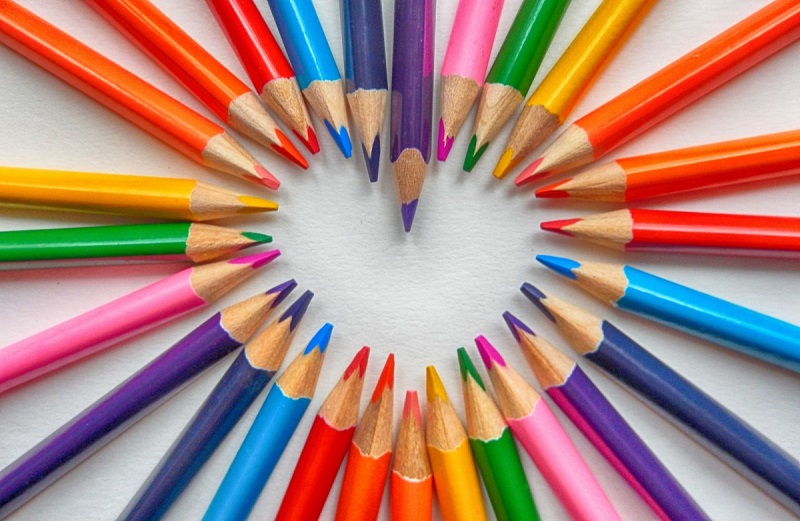 |
| ▲ Handwriting in various colors (Source = Fixed) |
Human being exposed to various colors every day and designing color. You can feel that you choose clothes and colors without much thought, but in fact all the colors seen in the world affects the human body and emotions. It acts as a signal that affects human emotions and physiological responses, and is like a powerful communication tool.
Color and academic performance
According to one study, various colors also affect children's academic performance. According to the Talent Development Association (ATD), a standardized pattern recognition test for students in 2002 showed that the performance score for coloring other than black and white was 5 to 10% higher. In other words, when it is associated with color, it means that memory or school record can be improved by 5 ~ 10%.
The relevance of color and academic performance is also evident in Eliot AJ's Color psychological functioning. Here, the effect of red color on achievement was introduced, and it was observed that the test results of the students could be worse if the red color was seen or exposed before the test.
The study was conducted with 71 US college students, each of whom was given a specific number, such as red, green, or black, before taking the 5-minute test. As a result, scores of red-colored students were found to be 20% lower than those of green-and-black-colored students. Research has hypothesized that the red color is related to the risk of failure in the context of achievement, thus inducing motivation to avoid.
According to the educational research institute, Shift Runner, color, which is part of the electromagnetic spectrum, has the purest form of energy, wavelength, and self-magnetic field, affecting the brain's neural pathways and causing biochemical reactions. Dr. Robert Gerard also added that all colors have specific wavelengths, and that each color affects the human body and brain in different ways. This means that each color has a special purpose in the human body and brain.
Academic Help Colors
green
Green is well-known and is considered a comfortable color that many people can see without difficulty. Because it is natural color and natural color, it helps calm and relieve stress. The most effective way to concentrate on it is to put a transparent sheet of green on top of the book, which can increase reading speed and reading comprehension.
blue
Blue is a color reminiscent of water. This makes you feel calm, safe, calm and serene. The most helpful part is the productivity improvement, which gives you the feeling of ending your work or study on that day.
purple
Often it gives a splendid and luxurious feel, which is a color that helps to uniqueness and solve problems.
Yellow and orange
These two colors of similar senses play a role in bringing happiness and warmth, reminiscent of sunrise and sunset. It is a color attracting the attention of people related to the thinking such as creativity and enlightenment.
Black color
Black makes a sense of unique sophisticated mysticism, which is a symbol of intelligence, power and authority, but also helps in reading.
grey
It is a color that encourages solidarity and practicality. Also, it is effective for reading because it is not as intense as black and less tired to eyes.
White
White is a color in which positive aspects such as purity, pureness, neutrality, peace, and cleanness are highlighted. In some, it is defined as a color that can be balanced with others because of its empty and clean image. It also gives you a feeling of clearing your mind and purifying your mind.
Color is the most powerful stimulus in the human brain. When information enters the human brain through the eyes and ears, it is stored in sensory memory, and at this point only the smallest amount of information can be remembered and cautious at a time. And if there is information that interests you, it is first stored in short-term memory. At this point, color is information that the brain first recognizes.
According to the US Bioinformatics Center, information is transferred to long-term memory as a result of various control processes, which depend on the degree of specific stimuli, so that human-focused information is stored in long-term memory.
In fact, many students use color to study. For example, you can color your notes or use colored highlighters, or use a color-coded pen to write notes that are important to your notes in color. This color is a great help to students' memory and academic achievement as well as creativity.
![[Parenting] Apply color to notes. “Various colors, help to improve academic performance” parenting apply color to notes various colors help to improve academic performance](https://moontore.com/wp-content/uploads/2019/02/parenting-apply-color-to-notes-various-colors-help-to-improve-academic-performance-1200x700.jpg)


